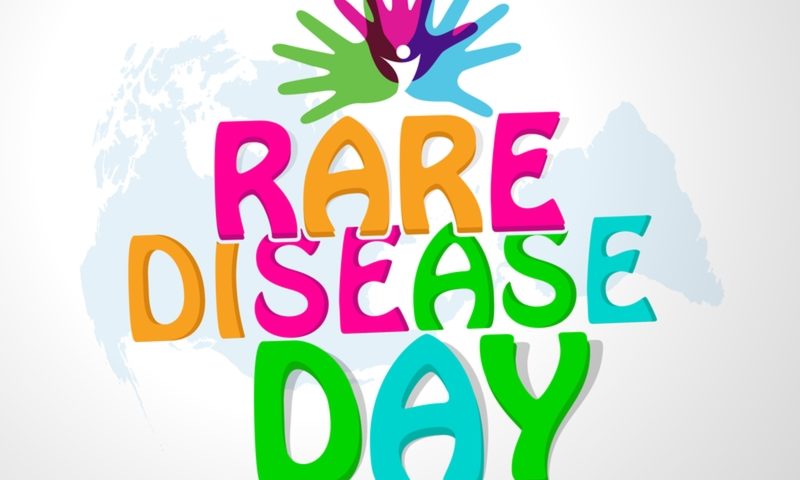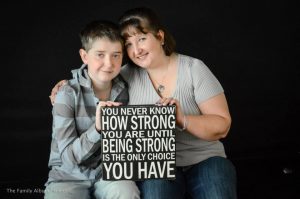Daring to Be Rare by Believing in the Power of Hope

Year-round, the parent company of this website, Bionews Services, strives to provide pertinent and updated information about complex, rare diseases. Staying current with medical research is a key component of effective self-advocacy, but personal experience is also a gold mine of valuable information and inspiration.
Bionews recognizes this by encouraging conversation within the forums of each rare disease website. The company also inspires patients and caregivers to spread awareness by sharing personal struggles and triumphs beyond their specific communities. Doing so creates camaraderie among all those suffering from a rare illness. It also educates and stimulates compassion from those who are fortunate to have no clue of what being sick with a rare disease is like. Most importantly, sharing personal stories might be the “aha!” moment that leads someone to an earlier diagnosis.
In recognition of Rare Disease Day on Feb. 29, Bionews has started a campaign. Those living with a rare disease are encouraged to storm the internet with personal stories, pictures, and videos. We are being asked to include the hashtag #WhatMakesMeRare ending in the initials of our rare disease, for example, #WhatMakesMeRarePH.
Pulmonary hypertension is a very rare, incurable, and life-threatening condition that affects the arteries in the lungs and the right side of the heart. Treatments can provide a better quality of life for an uncertain amount of time, but when they stop helping, hope begins to fade. Not everyone is eligible for the second chance at life that a lung transplant, or even rarer, a heart and double-lung transplant, can provide.
Therefore, my son Cullen is extremely rare. He was diagnosed with idiopathic pulmonary hypertension at 8 years old and received a heart and double-lung transplant when he was 14. In August 2019, he beat the discouraging odds of survival by celebrating five years post-transplant. Despite difficult and ongoing challenges, he continues to thrive.
But as his mom and caregiver, what makes me rare?
Mothers often check on their sleeping child, but when I did, it was to make sure Cullen was still breathing. I spent many sleepless nights watching him struggle. Weekday mornings were especially heartbreaking because I had to assess whether Cullen was well enough to attend school.
Labored breathing and chest pains often kept him home. My husband and I were accustomed to making quick decisions about who would stay home from work, how our other son would get to school, and what our game plan would be if Cullen needed to see a doctor, visit the emergency room, or be admitted to the hospital.
For this reason, I always had a bag packed and stored in our car for unexpected emergencies. After he was listed for transplant, we lived out of suitcases for a year so that we could move quickly when Cullen received the call.
Children notoriously ask difficult questions, but I don’t think it’s common for little ones to inquire about their own mortality. Cullen was in fourth grade when he started expressing concern that he was going to die young. I had never heard of PH before his diagnosis. Trying to console my child with hope regarding a disease that at the time I knew little about was beyond difficult.
I’ve seen my son through more tests, treatments, and surgeries than rites of passage. Having advocated for Cullen for more than a decade, I’ve become well-versed in medical jargon. Research and honing my listening skills helped me to become very knowledgeable about my son’s health concerns. Sometimes I’m asked if I’m a nurse or a doctor. This honorary medical degree I seemed to have earned is something I know I share with most parents of ill children.
Cullen was born healthy and didn’t become symptomatic until he was 6. For a long time, my family grieved the normalcy that we once enjoyed. Memories were reminders that when Cullen became rare, we all did, too — mother, father, and brother.
The loneliest leg of the journey was the two years he went misdiagnosed. The agonizing battle to reach a correct diagnosis is a common one that those living with rare diseases often fight. It’s also the reason why so many of us make a huge effort to share our experiences. We might not have the knowledge to find a cure, but we can at least help others recognize symptoms so they can benefit from an early diagnosis.
What makes me inconsolably rare is that I’m 48, and unlike most women my age, I have known more children who have died than adults. Therefore, I find it equally important to share Cullen’s life since transplant. There was a time when stories like this provided hope to us, and now it’s our turn to pass hope on to others.
Dare to be rare by believing in the power of hope when others might not.
***
Note: Pulmonary Hypertension News is strictly a news and information website about the disease. It does not provide medical advice, diagnosis, or treatment. This content is not intended to be a substitute for professional medical advice, diagnosis, or treatment. Always seek the advice of your physician or other qualified health provider with any questions you may have regarding a medical condition. Never disregard professional medical advice or delay in seeking it because of something you have read on this website. The opinions expressed in this column are not those of Pulmonary Hypertension News or its parent company, Bionews Services, and are intended to spark discussion about issues pertaining to pulmonary hypertension.









Leave a comment
Fill in the required fields to post. Your email address will not be published.